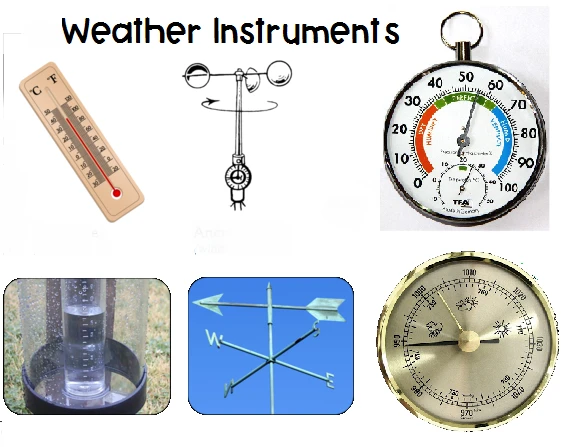
# The Instruments of the Weather
## Understanding the Tools That Measure Our Atmosphere
Weather instruments play a crucial role in our daily lives, helping us predict storms, plan outdoor activities, and understand climate patterns. These specialized tools have evolved significantly over centuries, from simple observations to sophisticated digital devices.
### The Essential Weather Instruments
Thermometer: Measuring Temperature
The thermometer is perhaps the most familiar weather instrument. Modern versions use mercury or alcohol in glass tubes, while digital thermometers employ electronic sensors. Meteorologists use thermometers to track temperature changes that can indicate approaching weather systems.
Barometer: Tracking Atmospheric Pressure
Invented in 1643 by Evangelista Torricelli, the barometer measures atmospheric pressure. Falling pressure often signals stormy weather, while rising pressure indicates fair conditions. Today’s digital barometers provide highly accurate readings crucial for weather forecasting.
Anemometer: Gauging Wind Speed
This instrument measures wind speed and sometimes direction. The most common type has three or four cups that rotate with the wind, while ultrasonic anemometers use sound waves for more precise measurements without moving parts.
Hygrometer: Determining Humidity
Hygrometers measure the amount of water vapor in the air. Traditional versions used human hair (which expands with moisture), while modern electronic hygrometers use capacitive or resistive sensors to provide digital humidity readings.
## Advanced Weather Measurement Tools
Rain Gauge: Measuring Precipitation
Simple yet effective, rain gauges collect and measure liquid precipitation. The standard version is a cylindrical container with measurement markings, while more sophisticated tipping bucket gauges automatically record rainfall amounts.
Weather Balloons: Upper Atmosphere Probes
These helium-filled balloons carry instrument packages called radiosondes into the upper atmosphere. They measure temperature, humidity, pressure, and wind at various altitudes before bursting at high elevations.
Weather Satellites: The Big Picture
Orbiting satellites provide comprehensive views of weather systems across the globe. They track storms, measure sea surface temperatures, monitor vegetation health, and observe atmospheric composition using various sensors.
Doppler Radar: Seeing Inside Storms
This advanced radar system detects precipitation and measures its motion. Doppler radar can identify rotation within thunderstorms that might lead to tornado formation, providing crucial warning time.
## The Future of Weather Instruments
Emerging technologies continue to revolutionize weather measurement. Miniaturized sensors, drone-based observations, and artificial intelligence for data analysis promise even more accurate forecasts. Citizen science projects now allow amateur meteorologists to contribute data through personal weather stations connected to global networks.
Understanding these instruments helps us appreciate the complex science behind everyday weather forecasts. As technology advances, our ability to predict and prepare for weather events will only improve, potentially saving lives and property from severe weather threats.
Keyword: instruments of the weather